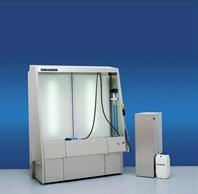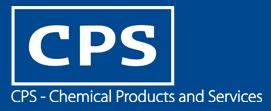 Add My Company
Add My Company
Sign In

Waste water regulations are probably the most diverse set of ‘environmental’ standards, as different rules apply at EU, Country, Regional and Local Authority levels, and they can also differ by Water Company and even by individual businesses! And what does ‘drain safe’ really mean on a product? Non-compliance is a serious issue with penalties ranging from improvement notices to large fines – let’s try to clear the muddied waters.
1 Be clear on what the regulations are in your work place
It is your responsibility to find this out and to operate accordingly. Therefore, as a first step, contact your local water company who will be able to advise you on what regulations apply to your building(s). We have found them to be very helpful as they want you to get it right too!
2 Making sense of the consent limit terminology
The consent limit specifies what and how much ‘trade effluent’ you are allowed to discharge into the drains and is made up of many different properties of waste water such as COD, pH, solids etc. So what do they mean?
COD (Chemical Oxygen Demand) measures how much oxygen is required to break down the ‘waste’ materials in the water at the water treatment plant. Typically a cocktail of bio-organisms is used by sewage treatment facilities to ‘feed’ on the waste and it is important to optimise the ‘chemical oxygen’ levels to keep them fed and alive. If COD levels are too high then they will run out of oxygen and die.
Unfortunately, screen printing products such as emulsions, fillers and inks have a relatively high COD of around 1,500,000 mg/Litre. So each litre of product that goes down the drain needs 750 litres of clean water to reduce the COD to 2,000mg/Litre, which is a common industrial effluent limit! Simple measures such as scraping as much emulsion out of the coating troughs and ink out of the screens prior to cleaning will reduce the amount that goes down the drain and lower your COD and solids.
pH is a measure of acidity or alkalinity and is a number on a logarithmic scale from 0 to 14, with 0 being highly acidic and 14 being highly alkaline. Water and ‘neutral’ materials have a pH close to 7. Acids and Alkali’s neutralise each other so it is possible to use different materials with high and low pH and achieve a ‘balanced’ neutral discharge – for example acidic stencil removers and alkaline haze removers.
Additionally, the consent limit typically applies to the specific source of ‘industrial effluent’ which in the case of screen printers may be a screen cleaning machine or the booth used to develop stencils. Therefore, other waste water from sources such as toilets, kitchens and wash rooms are excluded and it is not possible to ‘dilute’ the trade effluent with these other sources, even though they will most likely end up in the same sewer.
High solids can cause discoloration of water and also lead to sedimentation and blockage of pipes. Typically high solids content is not an issue within our industry however, if you are unsure of whether this is/could be a potential problem simply contact your screen making consumables supplier who will be able to help.
3. Drain Safe – what does that really mean?
Do not assume that a product labelled as ‘Drain Safe’ can actually be poured down the drain as it possibly can’t! What ‘Drain Safe’ actually means is that the product does not knowingly contain any chemicals that are banned from entering the waste water system, this is not guaranteeing compliance.
4. Review your processes
Even though you may have never had a problem with your Water Company in the past, regulations are becoming tougher and more efforts are being made to enforce them. Take an honest look and appraisal of your cleaning operation and if you have concerns or “think it looks wrong” then it probably is.
Understanding and knowledge are key to this and just a few small changes could make all the difference. For example, consider selecting products that have a lower environmental impact on waste water at the start of the process. The table summarises the type of products available and what impact level they have.
Remember to ‘Keep it Clean’!
Drain Safe Products: They’re Waste Water Compliant Right? Wrong!
Below is a video from the presentation titled Drain Safe Products: They’re Waste Water Compliant Right? Wrong!, which was presented at the FESPA UK Fabric Printing Now Conference in October 2015. The slides from this presentation can also be found on slide share using this link: http://www.slideshare.net/WilliamShorter/cps-drain-safe
Please feel free to share this 'How To Screen Print' guide with your friends, on blogs and via social media.
If you have any excellent screen printing hints and tips, please share them in the 'Screen Printers Of The World Unite Community' on Google+ or contact us via technical@cps.eu and maybe we can feature them in a new guide.
For more screen printing guides visit our 'How To Screen Print' page.
For more information on Understanding Waste Water talk to CPS - Chemical Products and Services
Enquire Now
More related to Understanding Waste Water
List your company on FindTheNeedle.
